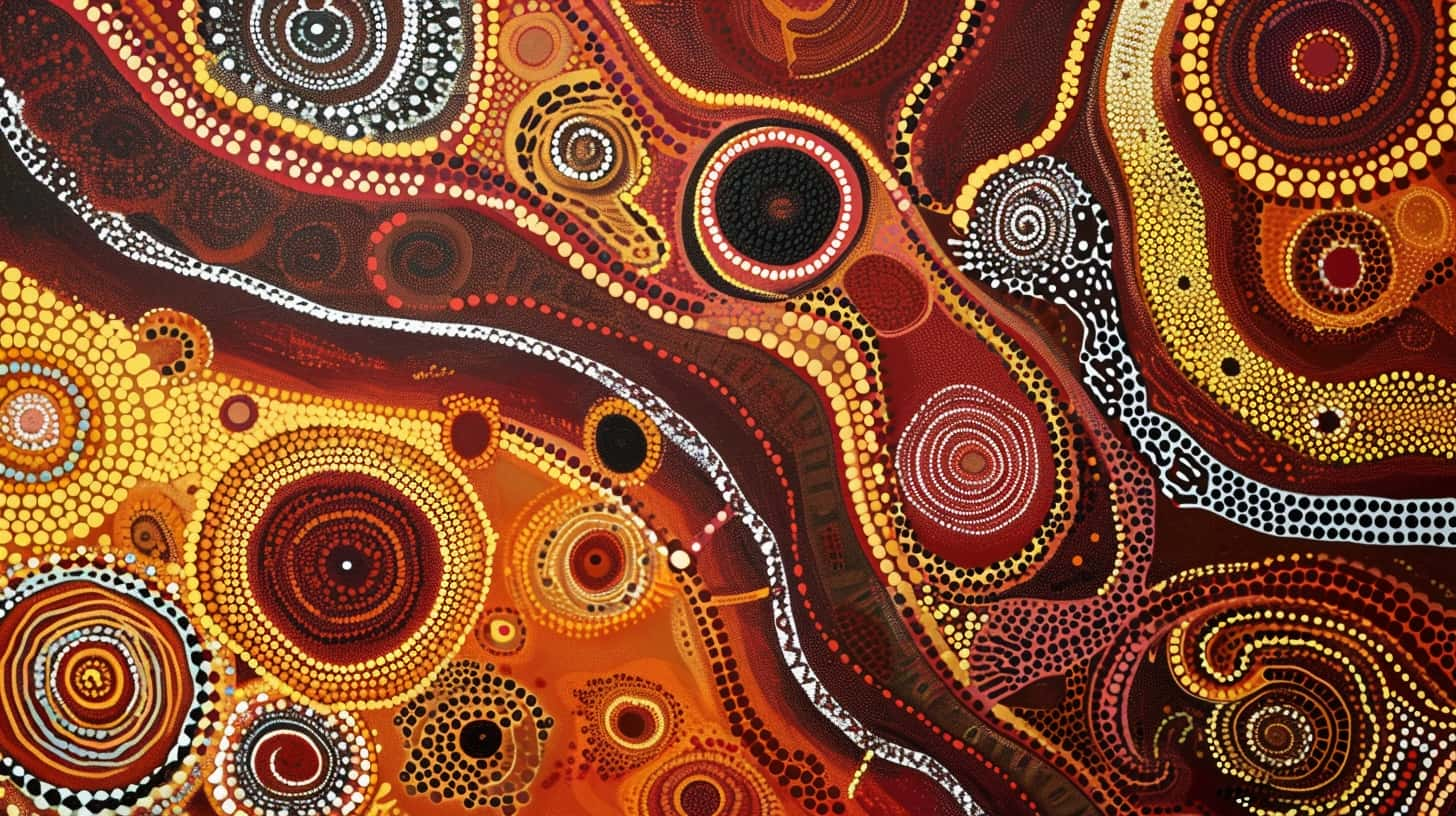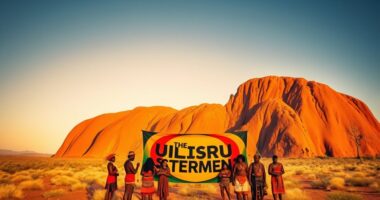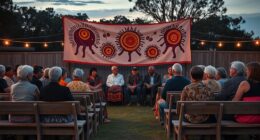Have you ever thought about how to uphold Indigenous artists and protect their cultural heritage while appreciating stunning Aboriginal artwork? Ethical Aboriginal art highlights exceptional talent and encourages fair and respectful practices in the field. This art draws heavily from cultural customs, reflecting centuries of stories and symbols. By embracing ethical purchasing, we can contribute to the growth of Indigenous artists and communities, ensuring the preservation of their cultural legacy. Let’s dive into the world of ethical Aboriginal art, recognizing its deep cultural significance and understanding how our consumer choices can make a real impact on the lives of Indigenous artists.
Understanding the Importance of Ethical Art Purchasing
Fair Compensation
When we buy ethical Aboriginal art, we ensure that the artists are fairly compensated for their incredible work. This means that the talented individuals behind these beautiful creations receive a fair share of the profits. By supporting ethical art purchasing, we actively contribute to the livelihoods of these artists and their communities. In doing so, we help sustain their artistic traditions and provide them with opportunities for economic growth.

Supporting ethical practices in art purchasing is crucial because it empowers Indigenous artists to continue creating stunning pieces while also securing a viable income for themselves and their families. When an artist receives fair compensation for their work, it encourages them to keep producing authentic and culturally significant artworks. As consumers who appreciate this unique form of expression, our support plays a vital role in ensuring that these traditions thrive.
Preserving Cultural Heritage
By choosing to purchase ethically sourced Aboriginal art, we play an essential part in preserving the cultural heritage of Indigenous communities. These artworks often carry deep historical significance and reflect stories passed down through generations. When we invest in ethically produced Aboriginal art, we become guardians of these important narratives, helping to maintain and protect them for future generations.
The act of acquiring ethically sourced Aboriginal art not only enriches our lives aesthetically but also contributes significantly to preserving Australia’s rich cultural tapestry. It allows us to connect with ancient traditions while providing financial support directly to those who uphold them through their craft.
Sustainable Development
Our decision to buy ethically made Aboriginal artwork has a direct impact on sustainable development within Indigenous communities. Through ethical purchases, we contribute positively towards fostering economic stability within these regions by providing consistent demand for authentic Indigenous artistry.
When we opt for ethically sourced artwork from local artisans or cooperatives rather than mass-produced imitations, our choices promote sustainable economic growth within Indigenous communities across Australia. This ensures that traditional craftsmanship remains both economically viable and culturally meaningful over time.
Identifying Authentic Aboriginal Art
Researching Artists
When we’re looking for ethical Aboriginal art, it’s crucial to delve into the background of the aboriginal artists. We can start by researching their cultural heritage, stories, and symbols. By understanding an artist’s unique style and techniques, we can better identify genuine indigenous artwork. For example, if an artist specializes in a specific storytelling method or uses traditional symbols in their work, it’s more likely that their art is authentic.

It’s essential to look for information about the artist’s connection to their indigenous community. When we find out that an artist actively engages with their community through workshops or events promoting aboriginal culture, it adds credibility to their work. This direct involvement reflects a commitment to preserving and sharing traditions through ethical means.
Importance of Provenance
Provenance plays a significant role in distinguishing authentic Aboriginal art from mass-produced imitations. By understanding provenance – the documented history of ownership and origin – we gain insight into the legitimacy of indigenous artwork. For instance, if a piece comes with detailed documentation tracing its creation back to reputable sources within an aboriginal community or recognized art institution, it enhances its authenticity.
We should always ask for provenance when considering purchasing indigenous artwork. The presence of detailed records demonstrating where and how the art was created provides assurance that our investment supports ethical practices within aboriginal communities.
Evaluating Cultural Integrity
As responsible consumers seeking ethical Aboriginal art, evaluating cultural integrity becomes paramount in our decision-making process. It involves assessing whether the artwork respects traditional knowledge systems and holds significance within Indigenous cultures. For example, if a piece incorporates sacred symbols or stories without permission or proper understanding of their cultural context, it may not align with ethical standards.
We must consider whether the production methods honor Indigenous traditions respectfully without exploitation or misrepresentation. Ethical Aboriginal art should uphold cultural integrity by ensuring fair compensation for artists while safeguarding against unauthorized commercialization that diminishes the value of Indigenous heritage.
The Role of Consumers in Ethical Art Buying
Empowering Ourselves
We hold the power to drive positive change in the art industry. By educating ourselves about ethical aboriginal art practices, we empower ourselves to make informed choices. Understanding the significance of ethical sourcing and fair compensation for artists allows us to support cultural integrity.
Supporting genuine Aboriginal artists directly or through reputable galleries is crucial in maintaining ethical standards within the art world. This means seeking out artwork from sources that prioritize fair and respectful treatment of Indigenous communities. When we take a stand for ethical practices, we contribute to preserving the authenticity and traditions behind Aboriginal art.
Impactful Choices
Our purchasing decisions play a significant role in shaping the future landscape of Aboriginal art. Opting for ethically sourced artwork ensures that our support goes directly towards those who create it, fostering sustainable livelihoods for Indigenous artists and their communities. By choosing pieces with transparent origins, we actively combat exploitation and misappropriation within the industry.
It’s important to remember that our choices as consumers have a ripple effect on both individual artists and broader cultural preservation efforts. When we prioritize ethical considerations in our art purchases, we become advocates for fairness and respect towards Aboriginal creators.
Impactful Stories Behind Aboriginal Creations
Ancestral Connections
Aboriginal artworks carry stories of ancestral connections and spiritual beliefs. These creations often depict the Dreamtime, a period when ancestral spirits created the world. For instance, a painting might illustrate the journey of a particular ancestor or an event that took place during the Dreamtime. By understanding these narratives, we gain insight into the deep-rooted connection between Aboriginal people and their land.
Each piece holds a unique narrative that connects us to Indigenous culture. For example, a dot painting from Australia’s Northern Territory might tell the story of creation as understood by Aboriginal communities in that region. When we take the time to delve into these stories, we not only appreciate the artistry but also develop respect for traditions that have been passed down through generations.
Deepening Understanding and Respect
Appreciating the stories behind ethical Aboriginal art deepens our understanding and respect for Indigenous traditions. It allows us to recognize and acknowledge cultural practices that are significant to Aboriginal communities. Moreover, it fosters empathy and awareness about historical events and experiences that have shaped these cultures over time.
Guide to Making an Ethical Purchase
Authenticity and Fair Trade Practices
We need to ensure that the artists, galleries, and organizations involved follow fair trade practices. It’s crucial to seek out certifications or labels that guarantee authenticity and ethical standards. For example, look for certifications like the “Authentic Aboriginal Art” label which ensures that the artwork is created by genuine Aboriginal artists using traditional methods.
Engaging with artists or community representatives can provide valuable insights into their work. By doing so, we can learn about their artistic style, cultural significance of their creations, and how they are compensated for their work. This direct interaction helps us understand the impact of our purchase on the artist’s livelihood and supports a transparent transaction process.
Seeking out information from reputable sources such as Indigenous art centers or trusted galleries can also provide us with a deeper understanding of the ethical considerations surrounding ethical aboriginal art purchases.
Market Transparency
When considering an ethical aboriginal art purchase, it’s essential to research not only the individual artist but also the broader market. Understanding pricing structures in relation to fair compensation for artists is crucial in ensuring our support directly benefits these communities.
By researching market prices for similar pieces of artwork from various sources, we gain insight into whether an artist is being fairly compensated for their work. We should be cautious if there are significant discrepancies between what an artist receives compared to what collectors pay for their creations.
Exploring different platforms where artworks are sold allows us to compare prices while keeping fairness and transparency in mind.
Community Impact
Supporting ethical practices within Aboriginal art involves recognizing its cultural significance beyond just a commodity. When purchasing these artworks ethically, we contribute directly towards preserving traditions and supporting indigenous communities’ economic well-being.
Finding Reliable Sources for Authentic Artwork
Reputable Galleries
When we’re searching for ethical Aboriginal art, reputable galleries are a fantastic place to start. These galleries carefully select artworks, ensuring their quality and authenticity. They provide us with valuable information about the artists and the provenance of the artworks. By purchasing from these establishments, we can be confident that we are acquiring genuine Aboriginal art.
Another advantage of choosing reputable galleries is that they often work closely with Indigenous artists, respecting their cultural symbols and traditions. This ensures that the paintings we purchase accurately represent Indigenous culture and history.
We should look for established galleries known for promoting ethical practices in selling Aboriginal art. These spaces prioritize fair compensation for artists while also educating buyers about the significance of each piece.
Community Art Centers
Community art centers offer an invaluable opportunity to directly connect with Indigenous artists and acquire authentic artworks. By visiting these centers, we not only support local communities but also gain insight into the stories behind each creation.
The personal connection formed by interacting with the artists themselves adds depth and meaning to our purchase. We get to witness firsthand how traditional techniques are used to create contemporary pieces, enriching our understanding of Aboriginal artistry.
Furthermore, many community art centers reinvest profits into programs that benefit Indigenous communities, making our contribution more impactful than just a simple sale transaction.
Collaborating with Indigenous-Owned Businesses
Collaborating with Indigenous-owned businesses is another powerful way to ensure ethical sourcing of Aboriginal art. By doing so, we actively contribute to economic empowerment within these communities while celebrating their artistic heritage.
Indigenous-owned businesses often have a strong focus on preserving cultural integrity in every aspect of their operations – including artwork sales – safeguarding against exploitation or misrepresentation of traditional symbols or styles.
Moreover, when supporting these enterprises, we become part of a movement that promotes fair trade principles and advocates for greater recognition of Indigenous rights in the arts industry.
Supporting Community Art Centres and Artists
Preserving Culture
When we buy ethical Aboriginal art, we’re not just purchasing a beautiful piece; we’re also contributing to the preservation of an entire culture. Community art centers play a crucial role in safeguarding and promoting Aboriginal art and culture. They serve as hubs where artists can gather, learn from each other, and pass down traditional techniques through generations.
These centers are more than just galleries; they are living connections to the rich history, stories, and traditions of the Indigenous people. By supporting them, we help ensure that these valuable cultural assets continue to thrive for future generations.
Fair Compensation
One significant advantage of purchasing directly from artists or community organizations is ensuring fair compensation. When buying artwork through these channels, we eliminate middlemen who might exploit artists by offering unfairly low prices for their work.
By engaging with community art centers or individual artists, we establish a direct connection that enables us to appreciate the true value of their creations while providing fair remuneration for their talent and effort.
- We contribute to preserving Aboriginal culture.
- Direct purchases ensure fair compensation for artists.
- Community art centers provide living connections to Indigenous traditions.
Investing Ethically in Aboriginal Art
Supporting Indigenous Artists
We are not just acquiring beautiful pieces; we are also contributing to the preservation of a rich cultural heritage. By investing ethically in Aboriginal art, we support the long-term sustainability of Indigenous artists and their communities. This means that our investment goes beyond monetary value; it directly impacts the lives and livelihoods of talented individuals who have been historically marginalized.
Engaging with experts and galleries specializing in Indigenous art is a great way to ensure that our investments align with ethical practices. These professionals can provide valuable insights into the background of each piece, its cultural significance, and whether the artist has been fairly compensated for their work. By recognizing the value of Aboriginal art as an investment, we encourage ethical standards within the industry, ensuring that artists receive due recognition and compensation for their creations.
Preserving Cultural Heritage
Investing ethically in Aboriginal art means being mindful of where and how we acquire these pieces. When considering selling or purchasing Aboriginal art, it’s essential to seek out reputable sources such as community-owned art centers or galleries with established relationships with Indigenous artists. This ensures that our transactions directly benefit the creators while respecting their cultural traditions.
By actively seeking out opportunities to invest in ethical Aboriginal artwork, we contribute to preserving a vital aspect of Australia’s cultural identity. Our choices reflect our commitment to supporting fair trade practices within the arts industry while celebrating the unique stories and artistic expressions of Indigenous communities.
Promoting Sustainable Practices
Our decision-making process. We aim not only to acquire stunning artworks but also strive towards creating positive social impact through our investments.
We understand that by choosing ethical avenues for purchasing Aboriginal art, we become advocates for fair compensation, respect for intellectual property rights, and responsible stewardship of culturally significant works. This approach fosters greater appreciation for Indigenous creativity while empowering artists economically.
Ethics and Authenticity Verification
Protecting Buyers
Ensuring the authenticity of the artworks is crucial. One way to do this is through certificates of authenticity. These certificates serve as proof that the artwork is genuine, giving buyers confidence in their purchase. This transparency adds value to the art and protects buyers from counterfeit pieces.
Investing ethically in Aboriginal art involves considering not only the financial aspect but also the ethical standards behind each piece. By prioritizing authentic works with proper documentation, we can ensure that artists are rightfully credited and compensated for their creations.
Collaborating with Experts
Collaborating with reputable appraisers and experts plays a significant role in verifying both authenticity and ethics when acquiring Aboriginal art. Appraisers help determine the value of an artwork while also validating its origins and integrity. This collaborative approach provides us with assurance regarding our investment’s genuineness, promoting ethical practices within the industry.
Conclusion on Supporting Ethical Aboriginal Art Practices
We’ve delved into the intricate world of ethical Aboriginal art, uncovering the significance of supporting authentic creations and the impact it has on indigenous communities. By understanding the stories behind these artworks and the role of consumers in ethical purchasing, we’ve realized the power we hold in preserving cultural heritage. As we navigate through the guide to making ethical purchases and identify reliable sources for authentic artwork, we become advocates for ethical art practices, ensuring that our investments contribute to the sustainable growth of Aboriginal artists and their communities.
Let’s continue our journey in supporting ethical Aboriginal art practices by spreading awareness, educating others about the importance of authenticity, and actively seeking out opportunities to invest in genuine indigenous artwork. Together, we can make a difference and uphold the values of respect, integrity, and cultural preservation within the realm of Aboriginal art. Our actions today will shape a more ethical and sustainable future for these talented artists and their rich cultural legacy.
Frequently Asked Questions
What is Ethical Aboriginal Art?
Ethical Aboriginal art refers to artwork created by Indigenous Australian artists with respect for their cultural traditions, and the fair and respectful treatment of artists. It involves purchasing art that directly supports the artists and their communities.
How can I Identify Authentic Aboriginal Art?
Look for a valid provenance, such as certification from recognized Indigenous art organizations or community art centers. Authentic Aboriginal art often includes unique storytelling elements, symbols, and traditional techniques that are passed down through generations.
Why Should I Support Community Art Centers and Artists?
Supporting community art centers ensures that the proceeds from your purchase directly benefit the artists and their communities. This support helps preserve cultural heritage, sustain traditional practices, and provides economic opportunities for Indigenous artists.
Is it Important to Invest Ethically in Aboriginal Art?
Investing ethically in Aboriginal art not only supports the livelihoods of Indigenous artists but also contributes to preserving a rich cultural heritage. By making ethical purchases, you help maintain the authenticity of artworks while respecting Indigenous rights.
Where Can I Find Reliable Sources for Authentic Artwork?
Reputable sources include established galleries specializing in Indigenous Australian art or direct purchases from community-owned enterprises or artist cooperatives. Look for certifications from recognized bodies ensuring ethical sourcing practices.









